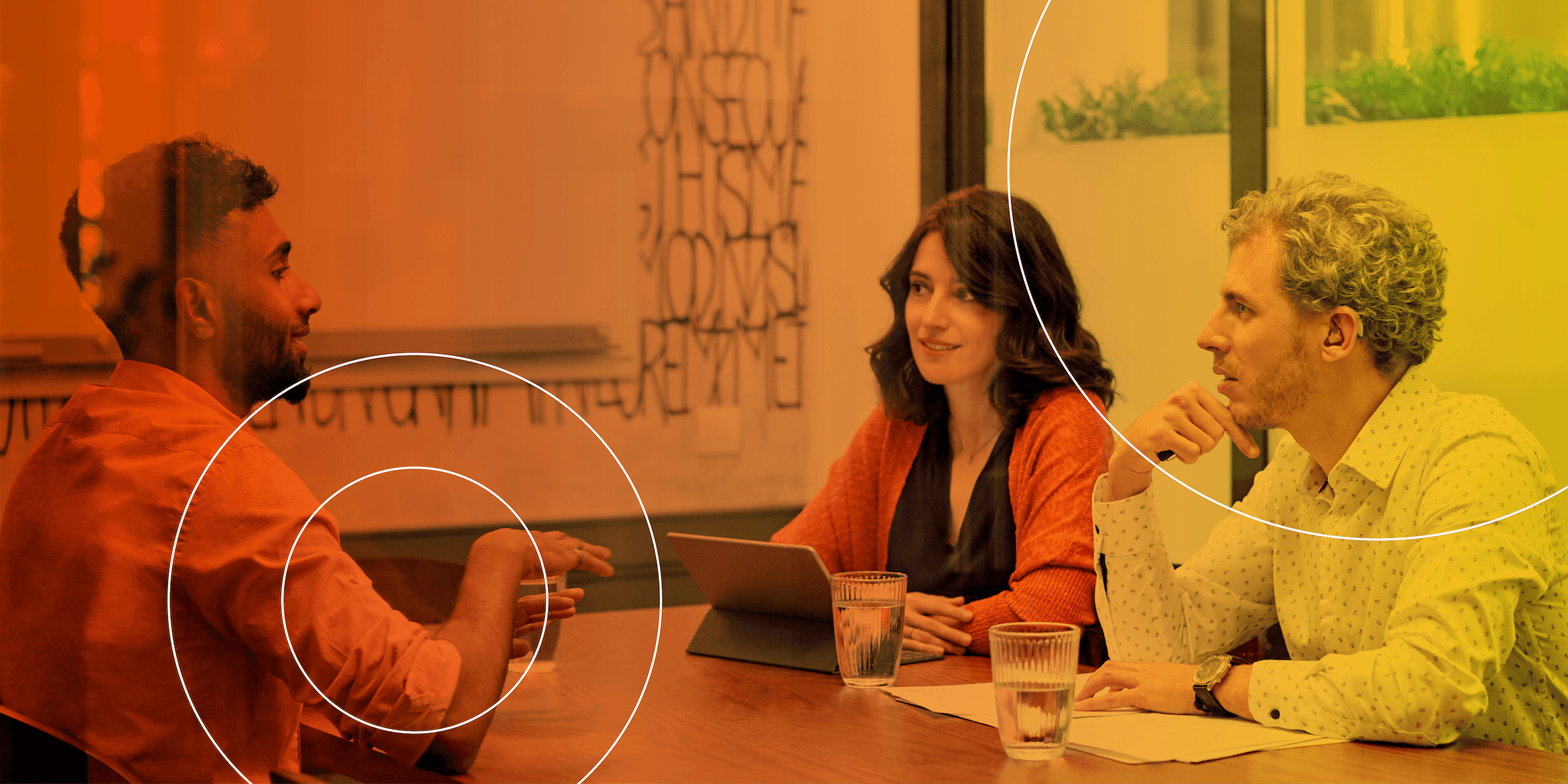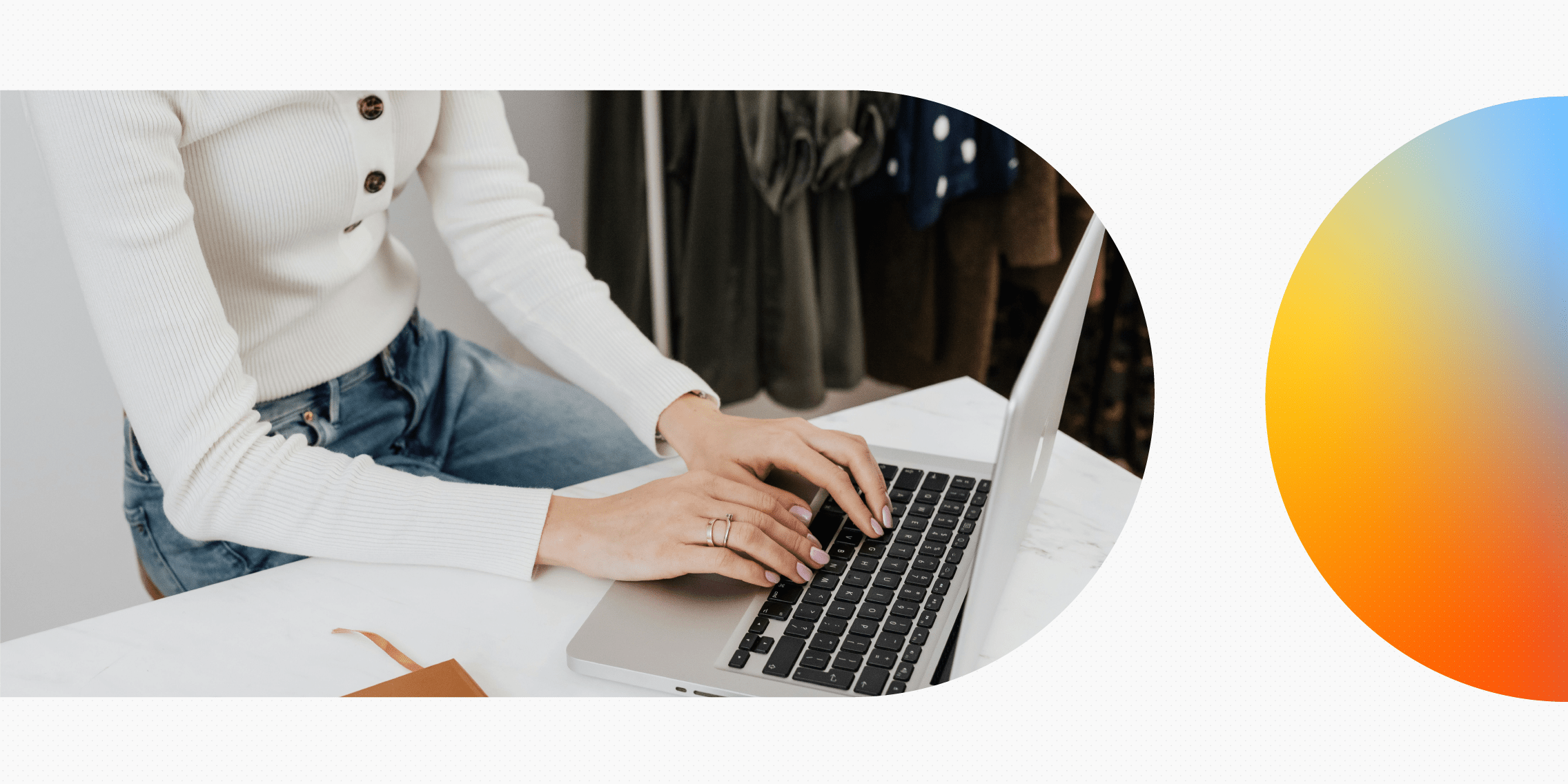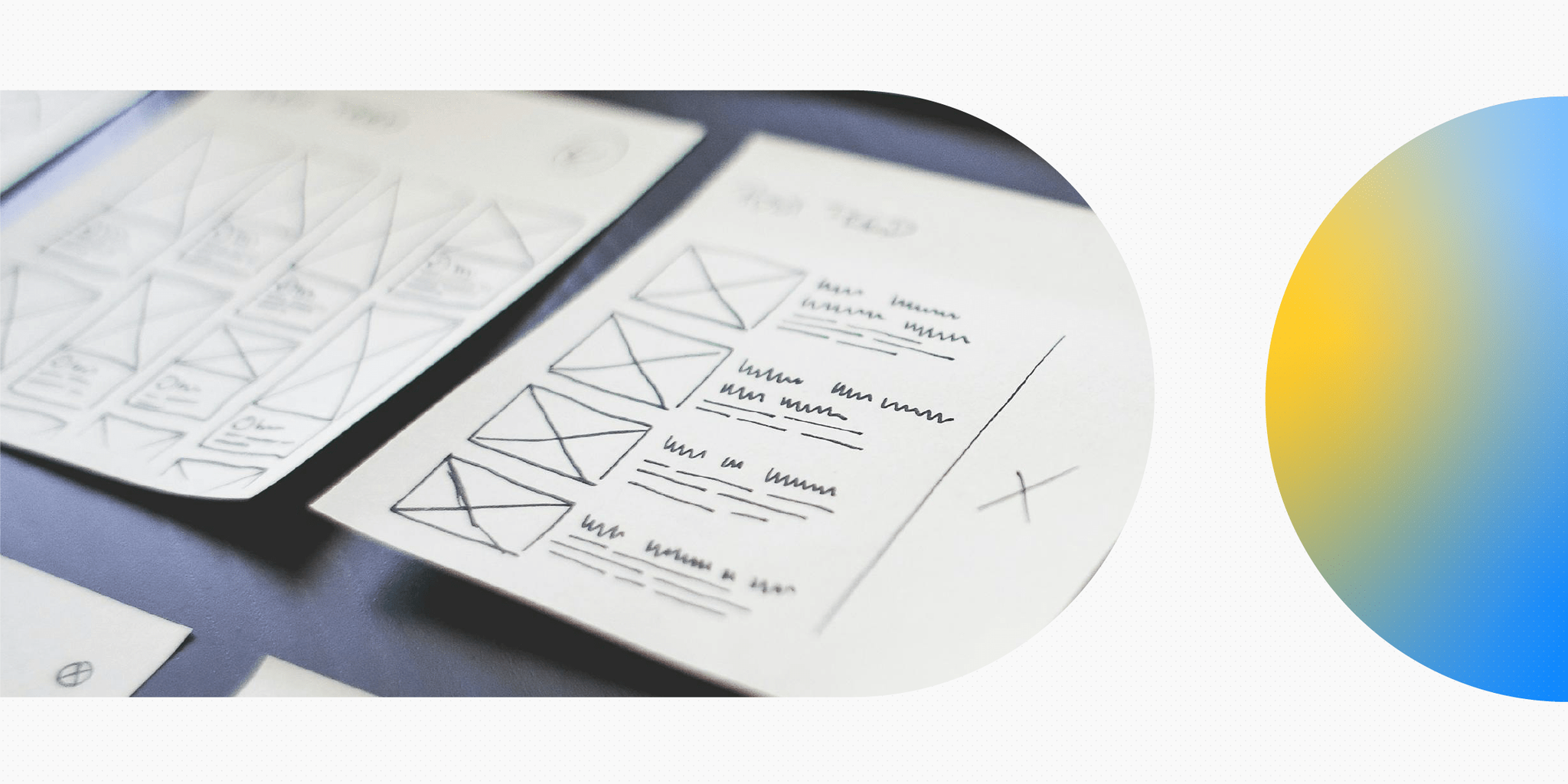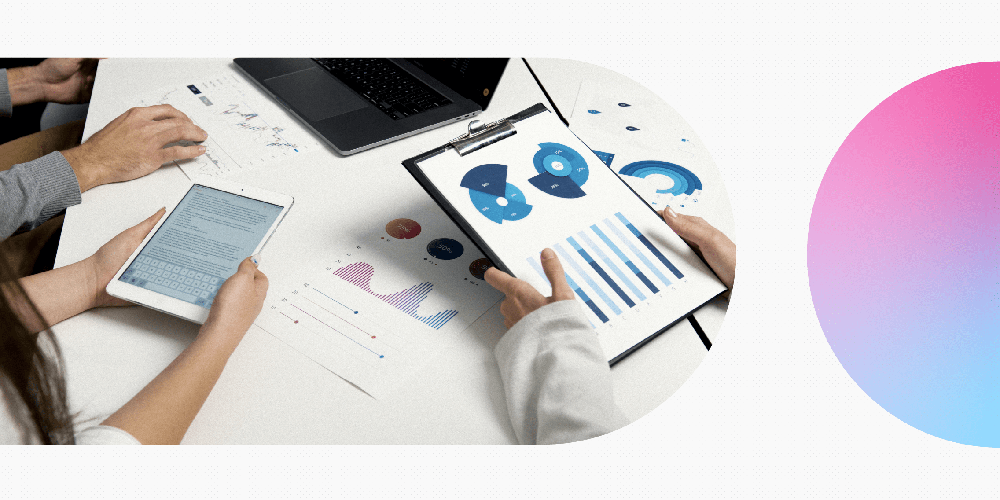Now that you’ve got the skills to become a user experience designer, you might be wondering how you land the job that will change your career. Getting a job as a UX designer can feel like an overwhelming undertaking if you’re not prepared.
In this guide, we’ll dive into the phases of a UX job interview, how to present your portfolio, how to carry out practical tasks and how to prepare for your interview.
What to expect in a UX job interview
The UX hiring process is usually broken out into phases. These phases will happen on different days, usually throughout a couple of weeks. You’ll likely spend upwards of five hours interviewing for a design job.
Phone screening
During the phone screening, you’ll chat with the recruiter, human resources or the person who posted the job opportunity to learn more about the job description. They’ll ask questions about your work history and make sure you’re a good fit.
Phone or video interview: baseline experience
If the recruiter thinks you’re a good fit, they’ll schedule a phone interview. During this phase, you’ll chat with other designers or the hiring manager. This interview usually lasts 45-60 minutes.
They’ll ask you questions about:
- The basics of UX design
- What challenges you had
- How you collaborated with engineers
Onsite interview: design task
This is the biggest piece of the UX job interview. Nowadays, this phase of the interview is often held virtually and they can sometimes be an all-day affair or spread out over a few days, depending on the tasks you are asked to carry out.
In this interview, you’ll go over your portfolio, meet individually with members of the team you applied to and do a design task.
You’ll meet with designers, engineers and product managers. They’ll be looking to see how you deal with challenges, how you collaborate with different teammates and whether you’re a good fit for their team’s culture.
Portfolio review
Normally, your portfolio review will be a part of the onsite interview process. But, occasionally, this review may happen virtually. This 45-60 minute session is where you’ll pitch to your potential employer and teammates.
Your portfolio is essentially a design problem in itself. You need to satisfy the needs of all of your potential employers while establishing your brand and expertise. If you don’t have experience, your portfolio – and how you present it – is one of the most important aspects of the interview process.
During this session you should focus on The Four Ps:
- Person: Invoke empathy by showing your potential employers who you are beyond your designs.
- Projects: Spend roughly 50% of this interview phase on this. Start by giving a broad introduction to your portfolio and choose two portfolio projects that are most relevant to the company you’re interviewing for. Take 15-20 minutes to show an in-depth review of those two projects specifically.
- Philosophy: Share your design philosophy to show the hiring manager whether you’ll be a good fit for their team.
- Process: Share examples of your design process or how you overcame a challenge when resources were in short supply. Sharing your process will help them see how you can work within their constraints and still produce a good design.
Design task
Sometimes the design task is done virtually but traditionally, it’s done in person. Design tasks are one of the most important parts of the UX interview process. During this phase of the interview, the recruiter will be looking to see how you think under pressure. During a whiteboard challenge especially, the interviewer is looking to see how you approach a problem and how you’ll work with others on their team.
There are three types of design tasks:
- Product critique: critique a product (maybe an app) and provide strategic feedback during an interview.
- Onsite design challenge: Work with the interviewer to solve a design problem onsite, usually through whiteboarding. You’ll have about 45 minutes to prepare beforehand.
- Take-home challenge: The interviewer will send you a topic that you’ll work on at home. You’ll research and design, submit your work and then present it when you come in for onsite interviews.
Usually, you’ll only be assigned one of these challenges.
During the challenge, the interviewer will be looking for answers to these questions:
- Did the candidate ask clarifying questions?
- Did the candidate focus on the users?
- Did the candidate make accurate assumptions and ask the right questions?
- Did the candidate dive deeper than the UI and consider the entire citation?
- Did the candidate exhibit an understanding of basic design principles?
- Did the candidate notice weaknesses and suggest improvements?
- Did the candidate make suggestions for user research?
- Did the candidate understand technical constraints?
UX interview tips
Ready to start preparing for your UX interview? Try these tips to make sure you’re prepared for the big day.
Create a process for design challenges
Having a process for tackling design challenges will make it feel less daunting. If you know how to move through a design problem step-by-step, you can stay calm and confident in the interview.
Consider these four topics when creating your process:
- Define the problem: describe what you think the problem is. Then, ask questions to specify the challenge, the users and the context. Write out the main aspects of the story to summarise.
- Explore solutions: write down potential opportunities, vocalise issues you’ve identified, note possible roadblocks and clarify assumptions that you deem reasonable to make.
- Focus: identify the top two problems you’ll focus on and their solutions.
- Present: Show the interviewers your design process and use design artefacts (workflows, sketches or concepts) to illustrate your ideas.
Practice design challenges
You need to practice in order to present well in person. Try presenting for friends and family, classmates or in front of a camera for full effect.
Get a whiteboard at home and get to work. You can find potential design challenges all over the internet just by googling “UX design challenge”. Give yourself 45 minutes to come up with a solution. Then, time yourself while presenting. Aim for your presentation to be 40 minutes or less.
Articulate your thoughts out loud
Don’t work silently. State your thoughts out loud and don’t be afraid to ask your interviewer questions. Your interviewer is looking to understand your thought process, so don’t be afraid to share it with them.
Don’t be defensive
When your interviewer asks you questions during your portfolio review or design challenge, don’t get defensive. Occasionally, interviewing can lead you to feel like your interviewer is picking on you but, in reality, they’re probably trying to understand your thinking process.
If you’re feeling defensive or like you need to answer quickly. Take a deep breath and buy yourself more time. Say something like, “That’s a great question, let me think about how to answer that for a moment”.
Showing that you’re calm and thoughtful will always make a good impression. Focus on problem-solving and stay positive.
Practice presenting your portfolio
Just like design challenges, you need to practice presenting your portfolio in front of other people or a camera.
Consider these points when presenting your portfolio:
- Provide context: What was the problem?
- Establish relevance and evoke empathy: Why was it important?
- Share your process: How did you go about solving it?
- Show results: How did you know you solved it?
- Exhibit strategy and problem-solving: What challenges did you face?
Eat a big meal before your interviews
You don’t want to run out of energy or get irritable during your interviews. Eat a big meal before your interview starts. Keep your brain fuelled and your mood in check. Especially if you have an onsite interview.
Be honest
If you encounter a question or skill that you don’t have experience with, be honest. As a new UX designer, no one expects you to know everything. They just want to know how to prepare to onboard you.
What questions will I be asked in a UX design interview?
We spoke with graduates and job interviewers to find the top UX design interview questions. Try answering these at home before an interview to get in the right headspace.
Top 20 UX design interview questions:
- What is UX design?
- Tell us about yourself. What makes you right for this position?
- What are your favourite examples of good UX?
- What is the difference between UX and UI?
- How would you improve the UX of our product?
- How would you split an unlimited budget for a UX project? In which part would you spend the most money?
- What is your approach to working with software engineers and developers?
- When would you engage the software engineers and developers in a UX project?
- Walk me through your workflow.
- Where do you find inspiration?
- Why did you choose UX design as your career?
- Tell us about a UX project that didn’t go according to plan. How did you manage it?
- How do you make feature-related decisions?
- How do you practice accessible design?
- What research methods have you used?
- How do you respond to negative feedback?
- Tell me about your least successful UX design project.
- Tell me about your most successful UX Design project.
- What does “design thinking” mean to you?
- What analytics tools and key performance indicators have you used to evaluate your designs?
Top takeaways
Do you feel more ready to ace your UX design interview? We hope so. When you put time and effort into practising for your interviews you’ll not only feel calm and capable, but you’ll also come across as a valuable employee.




